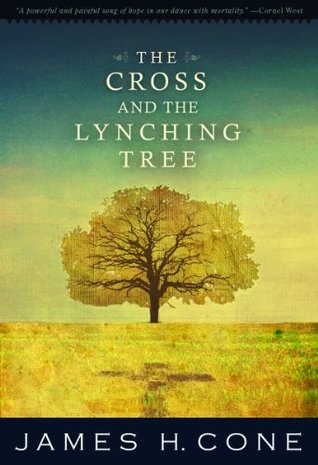More on this book
Community
Kindle Notes & Highlights
Reading and writing about the lynching nightmare, looking at many images of tortured black bodies, has been my deepest challenge and the most painful experience I have had as a theologian.
The cross helped me to deal with the brutal legacy of the lynching tree, and the lynching tree helped me to understand the tragic meaning of the cross.
The final word about black life is not death on a lynching tree but redemption in the cross—a miraculously transformed life found in the God of the gallows.
One has to be a little mad, kind of crazy, to find salvation in the cross, victory in defeat, and life in death.
Before Charles Johnston, a black minister, was hanged in Swainbora, Georgia, “he ‘preached his own funeral sermon,’ inducing the crowd to sing, kneel, raise their hands, and pray along with him.”[50]
Bonhoeffer also read widely in African American history and literature, including Walter White’s Rope and Faggot on the history of lynching, read about the burning of Raymond Gunn in Maryville, Missouri (January 12, 1931), in the Literary Digest, “the first lynching in 1931,” and expressed his outrage over the “infamous Scottsboro trial.”
While the cross symbolized God’s supreme love for human life, the lynching tree was the most terrifying symbol of hate in America.
cross, as an unrealizable goal in history—a state of perfection which no individual or group in society could ever fully hope to achieve. For Niebuhr,
They felt something redemptive about Jesus’ cross—transforming a “cruel tree” into a “Wondrous Cross.”
The symbol of the cross spoke to the lives of blacks because the likeness between the cross and the lynching tree created an eerie feeling of mystery and the supernatural.
I, too, was slow to embrace King’s view of redemptive suffering. Have not blacks, women, and poor people throughout the world suffered enough? Giving value to suffering seems to legitimize it.
not help wondering about the relationship between the whites who committed these lynchings and the whites I work with at Union Seminary.[11])
The House of Representatives passed the NAACP-initiated anti-lynching legislation several times, but it was always defeated in the Senate, whose members, especially in the South, insisted that lynching was a necessary tool to protect the purity of the white race.
If Jesus Christ came to America He would associate with Negroes and Italians and working people;
Black cultural critic Stanley Crouch called it “perhaps the greatest blues line of all time.”[13]
evangelist Dwight Moody, who segregated his revivals to appease whites in the South. “Our American Christians are too busy saving the souls of white Christians from burning in hellfire to save the lives of black ones from present burning in fires kindled by white Christians.”
I and other blacks knew that the Christian identity of whites was not a true expression of what it meant to follow Jesus.
It was black women’s faith in the God of Jesus that gave them the courage to face great danger in the black freedom movement. No one was more courageous than Fannie Lou Hamer. She was beaten severely and shot at many times, but she faced it all, confident that God was with her and would bring her through the difficulties she encountered fighting for freedom.
The resurrected Lord was the crucified Lord.
And yet the Christian gospel is more than a transcendent reality, more than “going to heaven when I die, to shout salvation as I fly.”
Bonhoeffer was right: “The Bible directs [us] to God’s powerlessness and suffering. Only a suffering God can help.”[6]


